Disclosure: This article contains affiliate links. We may earn a commission from purchases at no extra cost to you, which helps our travel content.
The first hint of Scotland's magic hit me as my plane descended through layers of mist toward Edinburgh. After years of hauling freight across the American Southwest, the emerald patchwork below felt like landing on another planet. This wasn't just another trip—it was a two-week pilgrimage I'd been planning since finding my grandfather's old journal detailing his return to ancestral soil back in the '70s. With my camera bag packed and a rough route mapped out, I was chasing more than just photographs. I was after that elusive Celtic light that painters and photographers have tried to bottle for centuries—that golden-hour glow that transforms ordinary hillsides into the stuff of legends. Whether you're a seasoned shooter or just looking to capture memories that don't look like everyone else's Instagram feed, this journey from Edinburgh's medieval streets to the rugged Highland passes offers something special for the solo traveler with a camera in hand and time to wander.
Edinburgh: Where Gothic Meets Golden Hour
Edinburgh doesn't ease you in—it grabs you by the collar and demands to be photographed. My first three days were spent wearing down boot leather on cobblestone streets that have witnessed more history than most textbooks contain. The city is essentially a playground of contrasts for photographers: medieval darkness against enlightenment elegance, all built on extinct volcanic rock.
The Royal Mile offers the postcard shots, sure, but it's the closes (narrow alleyways) branching off like dark capillaries that delivered my favorite images. These shadowy passages create natural frames, especially in early morning when delivery trucks haven't yet clogged the corners. Advocate's Close and Warriston's Close were particularly rewarding—just be prepared to wait patiently for the brief moments when tourists clear out.
Calton Hill became my sunrise ritual. Hauling myself up there by 6 AM meant I had the Athenian acropolis replicas largely to myself, with the city gradually illuminated below as the sun crested the horizon. The warm sandstone buildings caught fire with the first light, creating that magical 15-minute window where everything glows. My tripod earned its keep here—the lightweight carbon fiber construction making the pre-dawn hike manageable while providing the stability needed for those long exposures as the city lights transitioned to daybreak.
Arthur's Seat demanded an afternoon. This ancient volcano offers 360-degree views that transform dramatically with passing weather. I caught it on a day when fast-moving clouds created a light show across the landscape—patches of sunshine racing across the city like spotlights. The climb isn't technical, but it'll get your heart rate up, especially carrying gear. Worth every labored breath.

💡 Pro Tips
- Visit Calton Hill at sunrise when tourist numbers are minimal and the light is magical on the city's sandstone
- Shoot the Royal Mile during 'blue hour' (just after sunset) when the street lamps create a warm contrast against the deepening blue sky
- Use the natural framing of Edinburgh's many archways and closes to create depth in your city shots
The Road North: Finding Light in Transition Zones
Leaving Edinburgh behind, I picked up my rental car—a modest hatchback that would be my companion for the next 10 days. Having logged over a million miles behind the wheel of big rigs, I adjusted quickly to driving on the left, though the narrow country lanes demanded a different kind of focus than America's wide-open interstates.
The journey north is where Scotland begins to reveal its true character. The transitional landscapes between Lowlands and Highlands create what photographers call 'edge environments'—places where different ecosystems meet, creating visual drama. These boundary zones often deliver the most compelling images.
My first major stop was the Kelpies in Falkirk—massive horse-head sculptures that transform completely depending on the time of day and weather conditions. I arrived deliberately at dusk, when the internal lighting begins to glow against the deepening blue sky. The sculptures' metal plates catch light differently from every angle, rewarding the photographer who takes time to circle them completely.
Pushing further north, Dunkeld became an unexpected favorite. This small town along the River Tay sits at the geographical line where Lowlands meet Highlands, and the ancient cathedral ruins provided a perfect foreground for the autumn colors erupting on the surrounding hills. I spent a full day here, my variable ND filter allowing me to capture the river's silky flow against the static stones of the cathedral—a contrast of permanence and change that felt quintessentially Scottish.
The drive through Cairngorms National Park deserves more time than most itineraries allow. Pull-offs appear regularly, and what looks like a quick photo stop can easily become an hour-long exploration. The highland light here is mercurial—harsh one moment, ethereally soft the next as clouds race overhead. Keep your camera accessible and be ready to pull over when that perfect shaft of light breaks through.
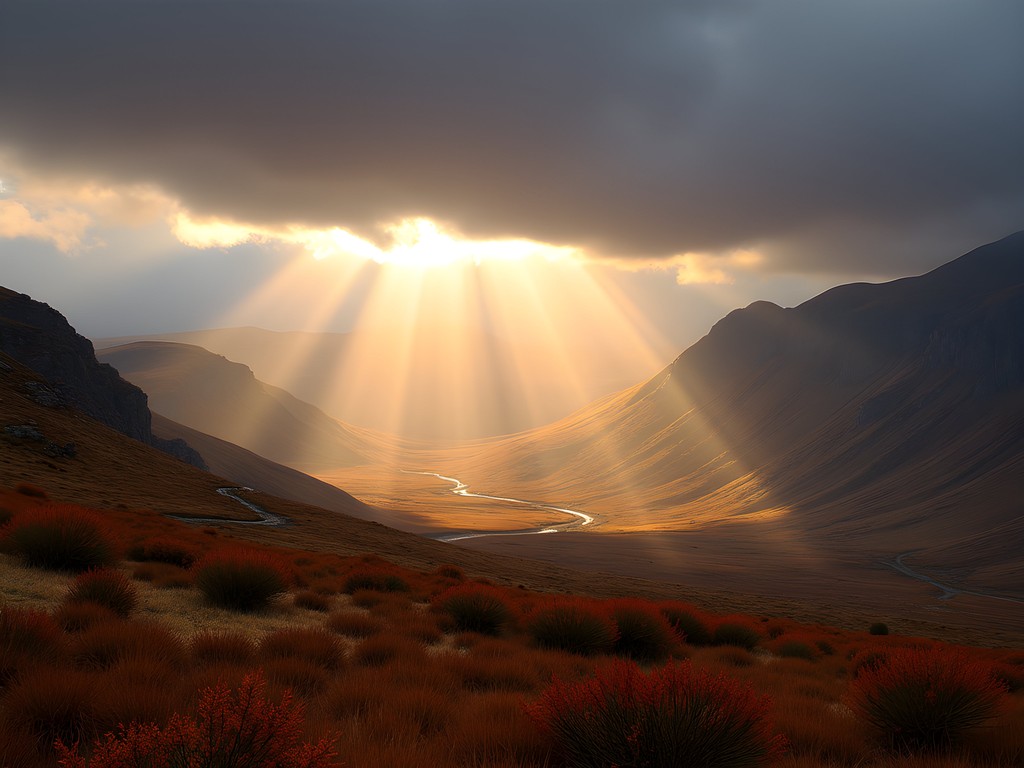
💡 Pro Tips
- Use polarizing filters when photographing Scotland's many lochs and rivers to cut glare and enhance color saturation
- Always carry rain covers for your camera gear—weather can change in minutes
- Scottish light changes rapidly—scout locations in advance so you can work quickly when conditions turn perfect
Highland Distilleries: Capturing Craft and Heritage
Anyone who follows my travels knows I've got a soft spot for craft spirits and the stories behind them. Scotland's distilleries offer not just world-class whisky, but world-class photographic opportunities that go beyond the obvious bottle shots.
I scheduled visits to three distilleries, each offering something unique visually. Dalwhinnie, sitting at one of the highest and coldest points in the Highlands, creates natural drama with its whitewashed buildings against often-brooding skies. The steam rising from the pagoda roofs against mountain backdrops makes for compositions that feel almost Japanese in their simplicity.
Glenlivet offered the most photographer-friendly tour, allowing tripods in certain areas (though always ask permission first). The copper stills create challenging but rewarding lighting conditions—the warm metallic glow contrasting with the industrial surroundings. Focus on details: the patina of well-worn tools, the rich colors of aging barrels, the play of light through amber liquid.
My favorite, though, was the smaller Edradour near Pitlochry. As Scotland's smallest traditional distillery, everything feels hand-crafted and intimate. The whitewashed buildings with red doors pop against green hillsides, and the scale allows you to capture entire production processes in single frames. Their willingness to let me linger with my camera after the formal tour ended resulted in some of my favorite images from the entire trip.
Whisky warehouses present unique challenges—they're dark, the air is thick with the 'angel's share' (evaporated whisky), and contrasts run high. My prime lens proved invaluable here, the wide aperture gathering precious light without flash, which would destroy the atmosphere. The lens's sharpness captured the texture of old wood and the subtle color variations in aging spirit.
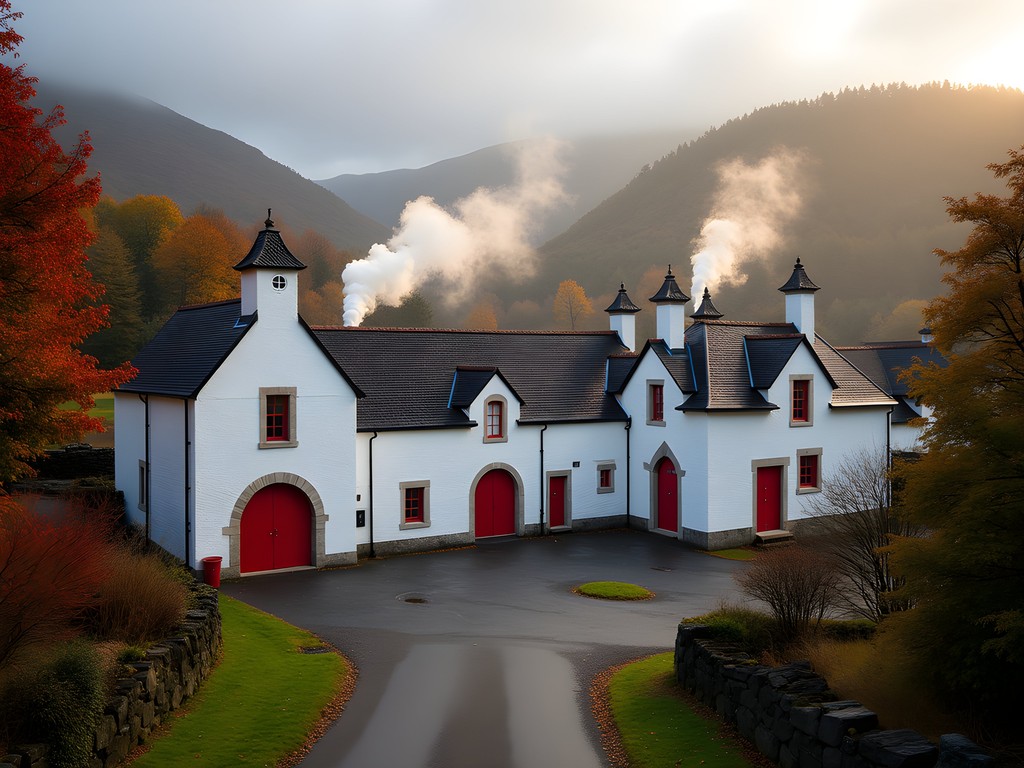
💡 Pro Tips
- Request permission to use a tripod before your distillery tour begins
- Look for contrasts between traditional methods and modern technology in distillery shots
- Capture the surrounding landscape as well—many distilleries are positioned near exceptional water sources in stunning locations
Isle of Skye: Where Weather Creates the Magic
If the Highlands are a photographer's playground, then Skye is the advanced course. This island demands patience, resilience, and a willingness to embrace conditions that would send most tourists running back to their rental cars. It's also where I captured images that still make my heart race when I review them.
The drive to Skye itself deserves mention. The road through Glencoe valley had me pulling over so often I nearly ran out of daylight. The Three Sisters mountains create one of Scotland's most dramatic landscapes, and the ever-changing light means no two photographers will capture the same scene. I spent two hours at one viewpoint, watching storm systems roll through and transform the valley from forbidding to inviting and back again.
On Skye itself, I based myself in Portree for four nights, using the colorful harbor town as a hub for daily excursions. The Old Man of Storr became a three-visit obsession—my first two attempts thwarted by fog so thick I could barely see my boots. The third morning, however, delivered the shot that made the entire trip worthwhile: first light breaking through clouds, illuminating the ancient rock pinnacles while valley mist swirled below. That image now hangs above my dining table back home.
The Quiraing's twisted landscape feels like something from another planet, particularly in the low-angled autumn light that creates deep shadows and highlights the terrain's bizarre contours. Arrive early—by midday, the narrow parking area fills completely.
Fairy Pools required a different approach. Rather than grand vistas, these crystal-clear pools demand close attention to detail—the underwater rocks, the perfect reflections, the small cascades between pools. My waterproof hiking boots proved their worth here, allowing me to wade into shallow sections for perspectives most visitors miss. The boots' Vibram soles provided crucial grip on slippery rocks while keeping my feet dry through stream crossings and boggy approaches.
Neist Point Lighthouse delivered the classic shot, but only after I hiked well beyond the main viewpoint, finding a less-photographed angle that included dramatic cliff faces catching the sunset's last light. The wind was fierce enough to threaten tripod stability—I had to use my body as a windbreak and weight the tripod with my backpack.
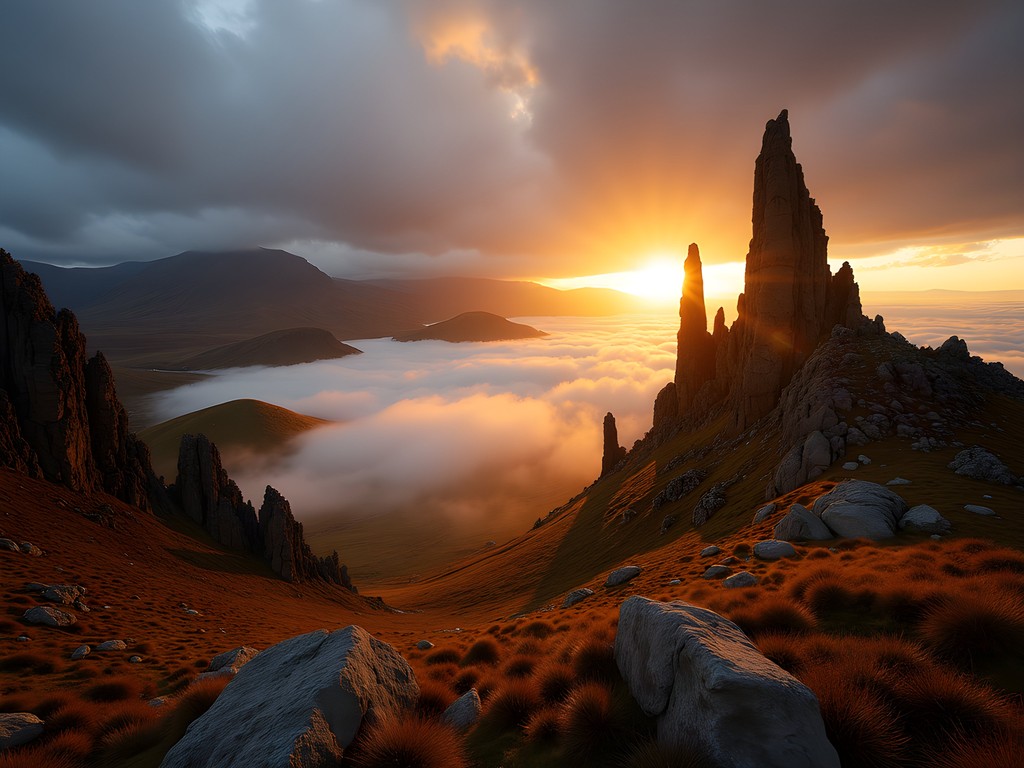
💡 Pro Tips
- Pack microfiber cloths for your lenses—Skye's mist and rain will test your weather sealing
- Don't rush away when weather looks poor—Skye's conditions can transform dramatically in minutes
- For popular sites like Old Man of Storr, explore beyond the obvious viewpoints—walk further, climb higher, and you'll find fresh perspectives
The Western Coast: Finding Solitude in the Frame
My final leg took me along Scotland's western coastline, where the tourist numbers thin considerably compared to Skye, especially in autumn. This region offers what I value most as both a photographer and traveler: space to breathe and time to wait for images to reveal themselves.
Applecross Peninsula requires navigating the infamous Bealach na Bà (Pass of the Cattle)—a single-track road with hairpin turns that climb to over 2,000 feet. As a truck driver, I've handled some challenging roads, but this one demands full attention. The reward at the top is a panoramic view across to Skye that shifts constantly with the moving weather. I spent a full afternoon here, watching weather fronts roll in from the Atlantic, creating layers of atmosphere that added depth to every composition.
The coastal village of Plockton defies its northern latitude with palm trees growing along its sheltered bay—a visual contradiction that makes for intriguing images. The whitewashed cottages lining the curved harbor create a natural leading line, while the boats moored in the bay add foreground interest. I visited at both high and low tide, finding completely different compositions as the water receded to reveal textured sand and seaweed-covered rocks.
Eilean Donan Castle may be Scotland's most photographed fortress, but approaching it in late afternoon revealed why its popularity is deserved. The castle sits at the confluence of three lochs, creating multiple reflection possibilities depending on your position. Rather than shooting from the obvious tourist viewpoint, I hiked along the shoreline for about a mile, finding a perspective that placed the castle against the backdrop of mountains rather than sky. The camera backpack I've trusted for years made carrying my full kit comfortable even on rough terrain—its modular design letting me quickly access different lenses as the light changed without having to set the entire pack down on wet ground.
My final night was spent near Gairloch, where I stumbled upon a perfect small bay just as the sun was setting. With no other people in sight, I watched the golden light play across tide pools while seabirds wheeled overhead. It wasn't the most dramatic landscape of the trip, but that solitary moment—just me, my camera, and Scotland's wild edge—encapsulated everything I'd come looking for.
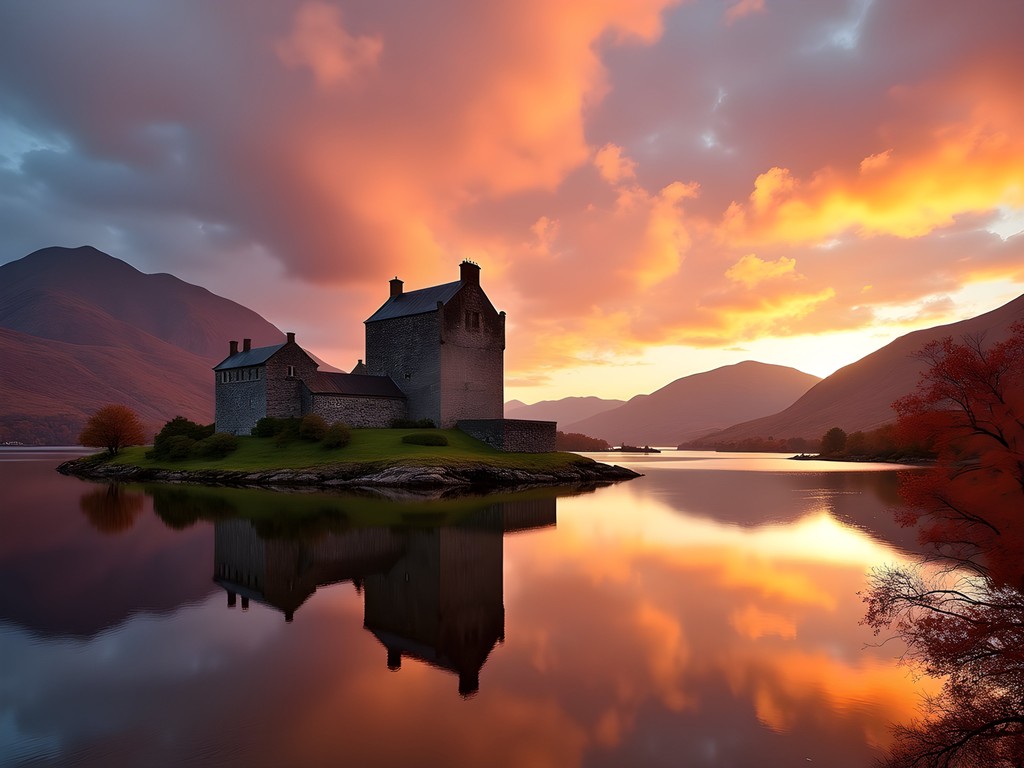
💡 Pro Tips
- The western coast offers fewer facilities but more solitude—carry extra batteries and memory cards
- Scottish coastal light can be blindingly bright when the sun breaks through—graduated ND filters help tame the dynamic range
- For coastal castle shots like Eilean Donan, check tide times in advance to capture perfect reflections in calm water
Final Thoughts
Two weeks in Scotland left me with nearly 3,000 images and a newfound appreciation for photographers who specialize in landscapes with temperamental weather. Unlike the dependable light of my familiar Southwest, Scotland demands adaptability and patience—qualities that translate into more meaningful images if you're willing to put in the time. The experience reminded me why I travel with a camera in the first place: not just to document, but to slow down and truly see. To wait for that moment when light, landscape and perspective align into something worth preserving. Whether you're chasing dramatic vistas or intimate details of distillery craftsmanship, Scotland in autumn delivers photographic opportunities that will challenge and reward in equal measure. Just remember to lower your camera occasionally and absorb the moment with your own eyes—some memories deserve to be captured only by the heart.
✨ Key Takeaways
- Scotland's autumn light is mercurial but magical—build flexibility into your itinerary to revisit locations when conditions improve
- The best images often come from difficult conditions—embrace the rain, mist and dramatic skies rather than waiting for 'perfect' weather
- Look beyond the postcard shots by hiking further, waiting longer, or visiting popular sites at unusual hours
📋 Practical Information
Best Time to Visit
September-October for autumn colors with fewer summer tourists
Budget Estimate
$2,500-3,500 for 2 weeks (excluding international flights)
Recommended Duration
Minimum 10 days, ideally 14-16 days
Difficulty Level
Moderate

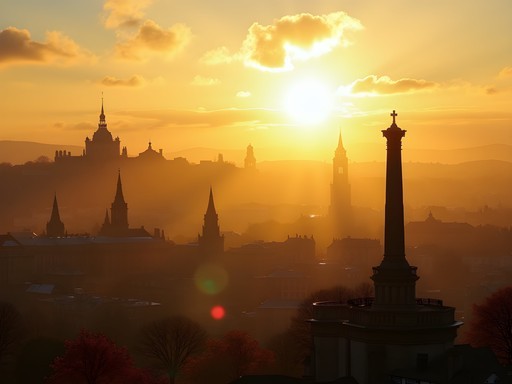












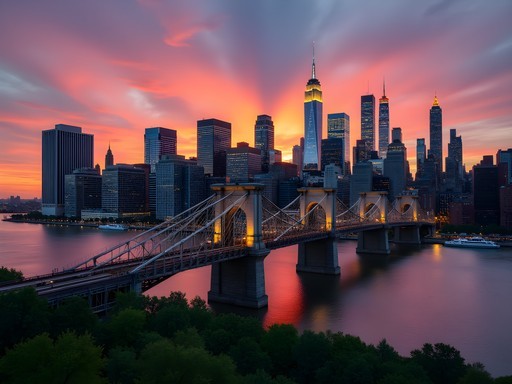
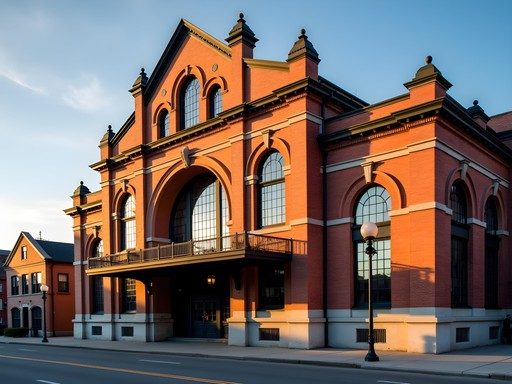
Comments
coolphotographer
Just got back from Scotland myself and your photos put mine to shame! The Highland distilleries section brought back memories - I tried to capture the copper stills at Glenlivet but struggled with the indoor lighting. How did you handle the low light in the distilleries? Also, that shot of Eilean Donan Castle with the moody sky is absolute perfection. I stood in that exact spot but had bright sunshine (which sounds nice but made for flat photos). Sometimes bad weather really is a photographer's best friend!
skyguy
That shot of the mist rolling over the Old Man of Storr is insane! What time of day was that taken?
Nova Harper
That was about 30 minutes before sunrise! Had to hike up in the dark with a headlamp, but so worth it when the light started breaking through.
hikinggal
Your Isle of Skye photos make me want to book a flight right now! Stunning work!
cityseeker
Those misty shots of Skye are incredible! I'm planning a trip for next spring - did you find two weeks was enough time? And would you recommend basing in Edinburgh and taking day trips, or actually staying in the Highlands?
Nova Harper
Two weeks was good, but I could have easily spent a month! I'd definitely recommend splitting your time - maybe 3-4 days in Edinburgh, then head north. Staying in the Highlands gives you much better light opportunities at dawn/dusk when you don't have to drive back to the city. I stayed in Portree on Skye for 4 nights and it was perfect!
cityseeker
Thanks so much for the advice! Going to look into accommodation in Portree right now!
Taylor Moreau
Nova, what a brilliant capture of Scotland's essence. I've been traveling to Edinburgh quarterly for business over the past decade, and your section on 'Edinburgh: Where Gothic Meets Golden Hour' perfectly articulates what makes the city so photogenic. The way you've described finding those transition zones between landmarks is spot on - I've found some of my best shots come from the closes and wynds between the major streets. Did you have any trouble with the constantly changing weather patterns in the Highlands? I've always found that to be both the greatest challenge and gift for photography there.
Nova Harper
Taylor, thanks for the kind words! The weather was definitely a challenge - I had to completely rethink my approach after the first few days. I ended up embracing the dramatic skies rather than waiting for clear conditions. Some of my favorite shots came during what most would consider 'bad weather'!
Taylor Moreau
That's the secret to Scottish photography, isn't it? I've learned to always have my weather sleeve handy, even on sunny days. The dramatic light just before a storm can be magical.
sunnybuddy
Your photos are absolutely stunning! Scotland has been on my bucket list forever, and now I'm even more motivated to go!
Nova Harper
Thanks so much! It really is a photographer's dream - hope you make it there soon!
backpackzone
How did you get around? Rental car or public transport? Wondering about the best way to reach those remote Highland spots with camera gear.
Nova Harper
I rented a car which gave me flexibility for those early morning/late evening shoots. Public transport is good for cities but limiting for remote locations, especially with heavy gear. The narrow Highland roads take getting used to though!
hikinggal
Was driving on the left difficult? That's what scares me about renting a car there!
Nova Harper
It's definitely an adjustment! I spent my first day in quieter areas to practice. The single-track roads with passing places in the Highlands were actually more challenging than the left-side driving.
Gregory Boyd
Nova, your section on capturing the distilleries brought back memories! I backpacked through Scotland last autumn and found the lighting inside those places absolutely magical but technically difficult. I ended up pushing my ISO higher than I'd like. Your interior shots maintain such clarity - were you shooting handheld or with a tripod? I found many distilleries had policies against tripods during tours. The way you've balanced the warm amber tones with the industrial elements is masterful. Your journey from American Southwest to Scottish Highlands shows how transferable photography skills can be across dramatically different landscapes.
sunnyway
Planning to visit Edinburgh in October. Any specific spots for sunset photos that aren't overrun with tourists?
Nova Harper
Blackford Hill gives amazing city panoramas at sunset and gets way fewer tourists than Calton Hill or Arthur's Seat. The Water of Leith walkway also offers some hidden gems!
sunnyway
Perfect, thanks! Adding those to my list right now.
Douglas Bradley
Nova, your transition from freight photography to Scottish landscapes is inspiring! I spent three weeks in Scotland last year and can confirm the weather is both your greatest ally and worst enemy. For anyone heading there, I recommend planning extra time at each location - I often waited hours for the perfect light break at Glencoe. The way you captured the distilleries is particularly impressive - that warm copper against the stone walls creates such contrast. Did you find any particular challenges with the constantly changing light conditions?
Nova Harper
Thanks Douglas! The changing light was definitely challenging - I ended up bracketing almost everything and sometimes blending exposures later. The Highland weather would shift from dramatic clouds to harsh sunlight in minutes!
Douglas Bradley
Bracketing saved me too! Did you find yourself using ND filters often for those waterfall shots on Skye?
Nova Harper
Constantly! My variable ND barely left my lens on Skye. Those dramatic water shots would've been impossible without it.
Venture X
Premium card with 2X miles, $300 travel credit, Priority Pass